The Triumph of the Words
Images are always in a losing battle when they play the game that words rule.
I was gifted a book on the cultural shift from words to pictures —Left to Right, which offers examples in ‘left brain’ and ‘right brain’ thinking that the author, David Crow, hoped will offer a useful discussion for students of communications and design. Crow, who died in 2022, was a designer and Professor, and Vice Chancellor at UAL colleges in the UK.
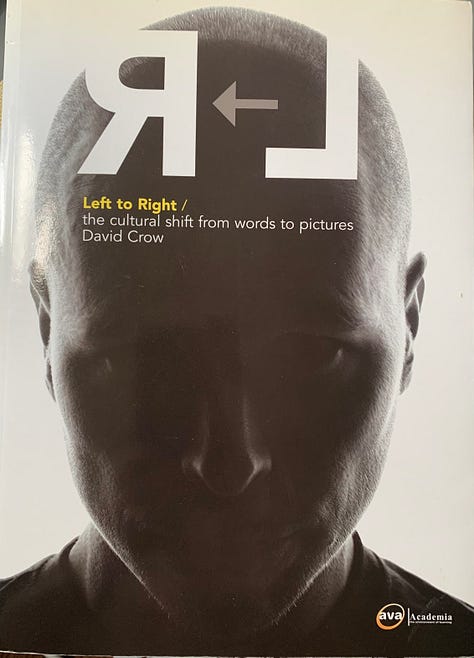

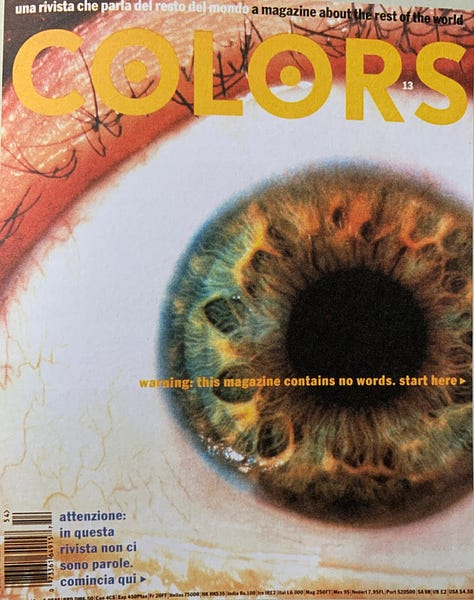
The book was published in 2006, and it’s incredible how much the world of words and images has changed in the 18 years since it was published. Crow couldn’t have known that the media titans of his time would be replaced, that the smartphone would change everything and social media would pillage and burn the Global Village that Marshall McLuhan touted as our worldwide community circle. It’s a wonderful nostalgia tour of design that spans the hand hewn and the digital like Adrian Frutiger with his Signs and Symbols, the new typography of the late 1980’s, and Colors magazine from the 1990’s. The entire book reads like a series of momentous successes for imagery as design, the web and information graphics are wrapped in the visual. But the veneer has rubbed off today and the beating heart of culture is not visual but literal and bounded and algorithmic.
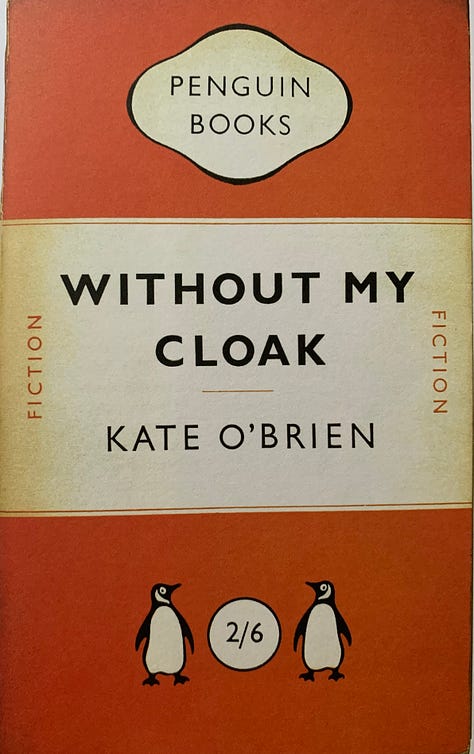
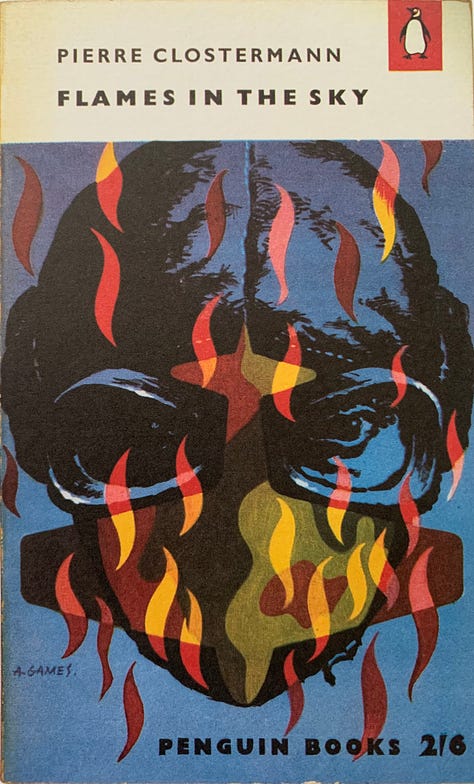
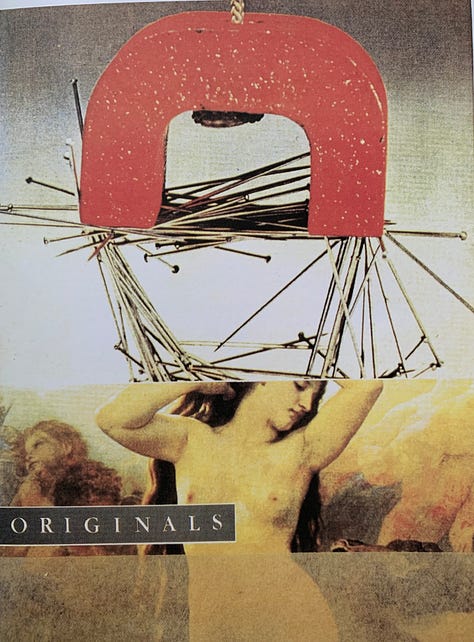
An excellent case study in the book is Penguin books. In the 1940/early 50’s text rules the covers. In a one year experiment in 1957 (photo magazines, advertising, and television are shaping the culture) a series of books are created that feature images on their covers with art direction by the incomparable Abram Games. In 1989, the visual becomes the cover as author, title, and publisher are replaced by an image by Dirk van Doren. The visual utopia didn’t happen, Crow may have seen a mirage reflected off the shiny surface of the early technological developments of the mid 2000’s.
The struggle between images and words is interpreted as a skirmish between the left and right brain and is given a unique emphasis in the book in a section titled, Gender and the Alphabet. Crow shares the work of Leonard Shlain, and his book The Alphabet Versus the Goddess. Shlain was a surgeon and popular writer, in his book he proposes that whenever a culture elevates the written word, then patriarchy dominates and conversely, when the importance of images dominates the written word then it is feminine values that come to the fore. The reviews for the book are very entertaining and widely divergent—-how apt. Like most thin sliced theories he reduces a spectrum to a binary and does disservice to cognition, culture and history.
Shlain shares the accepted understanding of cognitive difference in how images and words are perceived, ‘things’—like trees or buildings—the brain deciphers their image through wholeness simultaneously . With alphabetic words—-the brain relies on perception through a linear, sequential process and a compounded mapping between graphemes and phonemes. Recent studies have shown that the brain has adapted the area that we use for recognizing faces to decode letterforms and then connects those patterns to our language center for reading. Perceiving words may piggyback on our visual system of feature recognition, but the next step of moving into sound and language involves a series of processes that images don’t need. Reading letterforms is a newly adapted utility that serves our need to communicate, but it also misreads the image as another linear sequence to be catalogued.
Images will always lose a battle that takes place in the literal and literary game space of words and reading. I understand this acutely as a book Illustrator, it is a role that must follow the logic of the text. A visually surreal journey outside the borders of the text is not the role of the Illustration. The editor keeps close watch on the unruly image makers.
Teaching drawing also has its own word/image challenges. Many approaches in drawing instruction dumb down the images with words. The image is pasted to the words like a picture in a scrapbook with step by step directions. The student can follow along the visual example of the exercise or problem that is being addressed. They dutifully follow the lead of the word/image steps and their need for certainty is sated, and they have experienced reduced complexity, curiosity, and meaning in one exercise—- acquiring habits, learning little.
I employ words, analogies, and metaphors to offer an on-ramp to the drawing process, but I am careful not to attach the words to specific ways of seeing. It’s in the actual making of the image and the attempts to see and express a message on paper that the problem is addressed and explored. I can’t talk them through a drawing but there sure are a lot of books and experts available that purport to do that.
I wouldn’t be doing this writing each week if I didn’t see the value in words, but I live through images and I believe deeply in the practice of drawing as a way to create and experience meaning. The key to meaning through image making is the process, it was so difficult to teach drawing remotely, without seeing the critical activity of the choices made, how could l read the drawing? It’s like trying to help a golfer with their swing by only watching where the ball has landed. I am constantly in visual contact with my students work as they draw, because how, where, and why they make marks is the key to understanding how they are seeing the problem.
The best part of the drawing studio is when there is total silence except for conté on paper. You can feel the collective focus as the marks express the content. None of us need words to say anything, that’s when the power of the image is finally winning the war with words.







Nice post, you're making me think about drawing/writing in a different way, which is always nice. Self centered as all artists are. For me the challenge of looking at the world with fresh eyes versus signs we can make. Cartooning is really making signs not drawing and I struggle with the signs because their not as interesting as the process of drawing and looking at the world. Your making me
Good one, JM. Plus that wackadoodle theory about gender and images/words, my gosh.